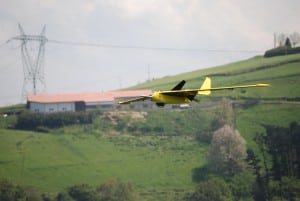Latest News
[Via Satellite 10-24-2014] Unmanned Aerial Vehicles (UAVs) are growing in popularity with a number of industries looking into the potential and benefits of using UAVs for their businesses. From train operators and energy companies, to farming and environmental organizations, the interest grows by the minute.
As many UAV systems use some kind of satellite technology, it is clearly a growing market for our industry. Satellites will be integral to mainstream UAV use.
“The majority of the value of satellite-based commercial images is from the data. The real value is from the data, particularly in areas like agriculture. The real use of the data is tying everything up between satellites, UAVs, and ground systems, so you have this multi-faceted data,” commented Andy Vick, engineer, U.K. Astronomy Technology Centre (UK ATC) during the Commercial UAV Show in London this week.
Vick spoke about the potential of using this satellite based data, and said there needs to be a more collaborative effort internationally for things to really move forward.
“The spectrum available for UAVs is quite limited,” he said. “For UAVs, it is going to have to be satellite-based communications. It is going to have to be the international organizations to set this up. Now is the right time to start a conversation for those people. I know there are several programs at the European Space Agency (ESA) looking at UAVs. I don’t know of any industry involvement with those. It is important for people to get involved in [building] a large community.”
Many types of organizations spoke at the event about how they are weaving UAVs into their overall communications and monitoring strategy. SNCF, the French Train operator, is one such organization. The French railway network is a large system with many parts connecting together. It runs 15,000 trains a day. Nicolas Pollet, head of the Unmanned Aerial System (UAS) project at SNCF, said the use of UAVs was a “catalyst for a revolution” for the company.
“We have a wide variety of infrastructures — it is complex. We are in need of new survey solutions. The aim is asset management to correctly manage the infrastructures. The future is data and to have this in real time,” he said. “For us, it is all about big data acquisition and sharing. It allows us to have better knowledge of the network and its state. UAVs will enable us to develop preventive maintenance [and] even predictive maintenance in some cases. We have to integrate UAVs with sensors along the tracks.”
Pollet highlighted the area of vegetation control where UAVs could make a difference. UAVs can be used for data acquisition to look at how vegetation is growing in and around train tracks. Pollet said using such imagery from UAVs, could be key in having better vegetation control. Trains cut through remote areas where terrestrial communications infrastructure is lacking and is oftentimes prohibited by the sheer difficulty of the terrain they traverse. Any use of UAVs here will undoubtedly require satellite coverage.
Susan Stevens, a remote sensing scientist at the Scottish Environment Protection Agency (SEPA), said UAVs could be used for a number of different types of missions. She highlighted that SEPA could use UAVs to monitor wind speeds, as well as looking at different gases such as methane. It could also look at waste volumes, for example. SEPA is also interested in developing a further knowledge of the precision agriculture market, where UAVs can clearly play a role.
There are pros and cons for using bigger and smaller UAVs, with the main disadvantages of using bigger UAVs relating to cost and regulation.
“The smaller UAVs are useful as they are cheaper. Like most organizations, we have budgets [in this area]. The risks are also a lot less, [and] the regulations for flying them are a lot more lenient, but we would like a larger UAV to fly over larger regional areas, and have more internal processing on board. We have a wish list for these things. If it is going to be really difficult to fly, and if there is a lot of regulation, then this might put us off [from using larger UAVs],” Stevens said.
Pollet agrees on the regulation issue. “We need real time analysis and we need man-machine interface and collaboration. Regulation is the principal difficulty [facing us right now]. We need systems certification and airworthiness,” he added.
The budding need for a reliable regulatory framework will have a major impact on the adoption of UAVs for civil purposes. As evident by the diversity of players interested in the technology, UAVs are poised to revolutionize the way businesses, governments and other organizations operate. Combined with their need for satellite communications, they stand — or rather, fly — as a promising opportunity for a multitude of industries.
Get the latest Via Satellite news!
Subscribe Now